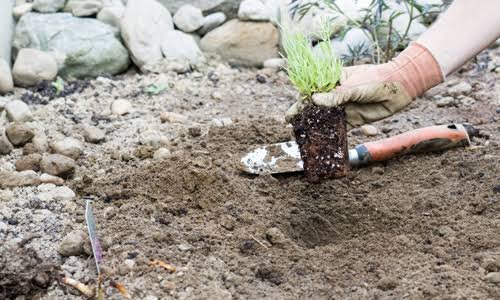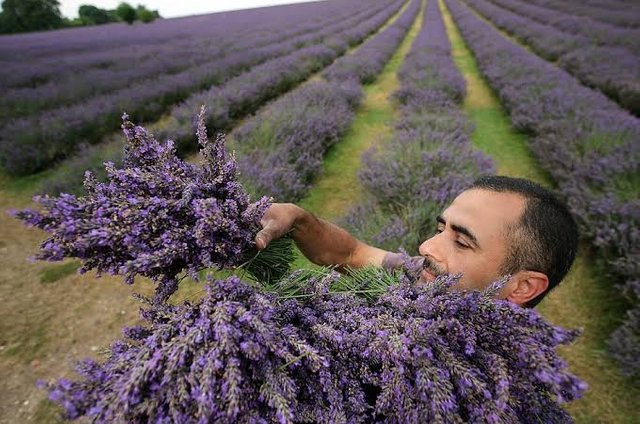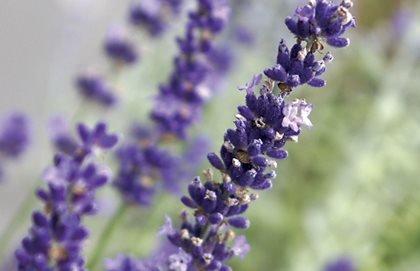HEALTHY LIVING - Lavandula angustifolia (Lavender)
INTRODUCTION
Lavender belongs to the genus Lavandular which ranges from Thirty to about Forty-Seven (30-47) known species of flowering plants, belonging to the mint family called Lamiaceae. It is native to the aged World and is distributed within Europe, across to Northern and Eastern Africa, Cape Verde and the Canary Islands, The Mediterranean, along the South-West of Asia and India respectively.
Numerous affiliate of Lavandula are cultivated expansively around the Temperate regions and it is so widely used because of its massive range of applications, such as Decorative plants for Aesthetic Gratification and Landscaping use, as a cooking element (culinary); it is used in dressing salad, honey, Beverages (teas, drinks or brew), sauces, as flavoring agent for a number of traditional dishes and cosmetics.
Commercially, it can be used for the extraction of essential oils that can show strong effects on the human skin and has the most unprecedented and esteemed smell in the world. The most widely cultivated species, Lavandula angustifolia (formerly called Lavandula officinalis), is often referred to as Lavender.
.jpg)
lavender oil

FARMING TECHNIQUE

lavender farm
Lavender is a Sun Loving Plant, and can thrive better in the Tropical regions of the world. The genus Lavandular best thrives on a Sandy soil, dry, well-drained soils. All varieties require minute or no manure application, but they does thrive best under good air circulation.
However, in Regions faced with increased humidity, the fungus infection (Root Rot) is considered a problem. It is has been observed from research that mulches ie organic mulch can lock-in moisture around the base of the plant, leading to root rot. Inorganic mulch such as packed down (crushed) rocks can give better results. The pH requirement for an optimum growth ranges from between pH 6 and pH8.
Hints:
Plant Lavender in the spring as the soil is warming up, use superior varieties to ensure survival over the winter.
Planting should be 2-3feet apart. Lavender usually attain a height of between 1- 3feets.
If planted in low or fairly fertile soil, clayey or heavy soil, incorporate organic matter to improve drainage.
Keep away from wet, moist areas.

NURSERY CARE
.jpg)
image source
- In humid growing site, cover the plants with a winter mulch of evergreen straw or bough.
Pruning should be carried out in the spring when fresh leaves (green leaves) begin to surface from the base of the plant.
Pruning should be done to remove one third of the top approximately.
Use mulch materials (crushed rocks or pea gravel) to reduce weed effect.
Mulch should be kept away from the crown of the Lavender plant.
- Water two times a week after planting until germination is established. Water full grown plants every 2-3weeks until buds are produced, then 1or 2 times per week till harvesting period.

HARVESTING OF LAVENDER
.jpg)
Lavender harvest
Harvesting of Lavender is carried during bud formation. At this time the flowers are still intact, they have not unwrap yet. Harvesting of Lavender during this period of the year will make the flowers fall off the stem without difficulty when dried up, easing collection process. The time of Harvest may vary depending on the intended use. When harvesting is done during budding, i.e. when flowers are closed, helps to preserve and maintain the perfume and color longer than the previous method. Most Lavender are hand-harvested.
Lavender bunches can be air-dried by hanging them in a warm, dry area, (avoid sunlight). It can be dried under eaves, in the garden, garage, etc as far as protection for the plant is guaranteed. I will prefer, after bundling them, tie each bundles to a rope tied end to end to a standing tree or pegs to the ground.
Drying may range from two to four week (2-4 weeks), after drying; you can shudder or tenderly rub the dried Lavender buds into a tray or bowl. Store Lavender in a cool dry place, preferably a jar, clean steel cans.
Hints:
Harvesting should be done in the morning hours when the oils are in large amount concentrated.
Stems can be cut as depending on the desired length. After cutting, gather into bundles and bind them together using a twig, twine or rubber band.

HEALTH IMPLICATION OF USING LAVENDER
Hint:
If you are vulnerable to allergens in the mint family, you may encounter unhelpful side effects from using Lavender as well. This effects are usually calm and may range from increased appetite, headache, constipation
The followings are some of the duly research uses of the Lavender plant as pertaining human health complications.
Trims down Anxiety & Stress
.jpg)
image source
Research has given a positive response in using Lavender to soothing anxiety and stress problems in humans. Lavender possesses naturally occurring organic compounds in its flowers and leaves, which can be crushed between the fingers and then applied to the temples.
This relevant application can calm the body and mind by balancing the mood and relieving thoughts resulting from anxiety. Another method of application that can also reduce anxiety and stress is to make Lavender tea, which will produce much same effect as the former.
Lavender contains antioxidant properties which is capable of impacting the ductless (endocrine) system to diminish the levels of stress hormones present in the human system.
Takes Care of Sleep Issues
.jpg)
image source
Over the years, the use of Lavender to treat insomnia and restless sleep patterns has prove rather successful. By simply making a tea out of Lavender flowers submerged in hot water, a person can induce sleep and relaxation effortlessly. Research has closely link these properties to Lavender’s flowers impact on the nerves. As a result, it is an effective nervine tea. It can also help to obliterate false ideas off the mind.
It is a strong Medicine that can also facilitate meditation sequence.
Anti-inflammatory Properties
With the continuous search for an unfailing way to calm or relax the mind and body, the use of Lavender has proven so successful. By obediently incorporating Lavender flowers into your bathing water and taking a lengthened soak, inflammatory problems are taken care of
Skin Treatment
.jpg)
image source
Research has shown that the use of Lavender flowers and its oil can help strength, regain and heal the skin. A common way of applying this treatment to your skin is to gently moist the affected skin area with water, then apply the oil repeatedly for about 2 weeks. Another method is to add Lavender flowers into spray cans or bottles containing water, then apply to the dried or irritated skin parts,
Conditions like eczema, and pimples (acne) etc are treated with this method successfully.
Antibacterial (Antiseptic) Ability
Lavender antibacterial abilities are highly effective in treating various skin infections, resulting from bacterial infection. Simply apply Lavender oil or crushed leaves depending on your choice on wounds and injuries for quick healing as well as preventing the growth of infections.
Strengthens Hair Growth and Follicular Health
.jpg)
image source
Alopecia (hair loss) and/or any other conditions that changes the class of your hair, can be treated by simply submerging Lavender flowers in water and then applying the mixture to your hair. This method functions effectively as shampoo which significantly enhances the hair and health of the hair follicles.
Enhances the Health Status of the Heart
.jpg)
image source
Atherosclerosis and other cardiovascular problems can be effectively prevented, using Lavender. It possesses relaxing features, contained in its naturally organic compounds and antioxidants properties. This therefore provide succor to the heart by minimizing blood pressure and soothing the nervousness on blood vessels.
Stroke and heart attach can be reduced using Lavender.
Digestive Issues Regulator
.jpg)
image source
Lavender contains Phenolic compounds called polyphenols, these polyphenols have a wide range of properties on the body. This polyphenols are important in preventing the development of destructive bacteria and belching or burping or eructation (accumulation of gas in the gut). It also relieves stomach uneasiness, reduces bloating (accumulation of fermented gas) and eliminate stomach cramps.
Application Method: Drink Lavender tea or chew the leaves.
REFERENCES
https://www.organicfacts.net/health-benefits/herbs-and-spices/lavender.html
https://gardentherapy.ca/harvesting-english-lavender/
https://www.sunset.com/garden/flowers-plants/guide-planting-care-harvesting-lavender
https://www.ncbi.nlm.nih.gov/pmc/articles/PMC2839398/





